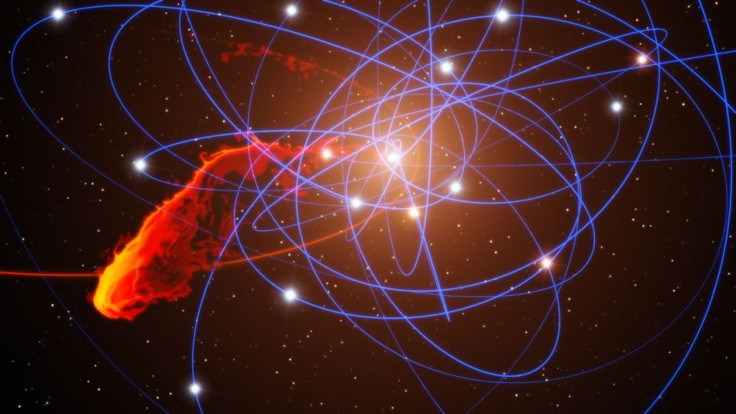Black Hole at Center of Milky Way Soon to Devour Giant Gas Cloud
By 2013, the Gas Cloud Will be Torn Apart by the Black Hole

Astronomers are eagerly awaiting the collision of a recently discovered gas cloud with the giant black hole at the center of our galaxy in 2013. Such a cosmic event has never been seen up close, and it will help scientists better understand exactly what happens when gas and light fall into a black hole. That's because other supermassive black holes are simply to far away to see in detail. The center of the Milky Way is comparatively close at just 27,000 light years.
"The idea of an astronaut close to a black hole being stretched out to resemble spaghetti is familiar from science fiction. But we can now see this happening for real to the newly discovered cloud. It is not going to survive the experience," Stefan Gillessen a researcher who will publish his findings on the black hole in the January 5, 2012 issue of the journal Nature, said in a statement.
As the gas cloud rockets toward the edge of the black hole, called the event horizon, it will start shooting out bursts of X-rays, but the cloud is already starting to disrupt. Astronomers have been watching the cloud for the last thee years with the European Southern Observatory's Very Large Telescope in Chile, and the cloud has doubled its speed in that time. It's made mostly of hydrogen and helium, and is a dusty ionised gas cloud about three times larger than the Earth.
"The next two years will be very interesting and should provide us with extremely valuable information on the behavior of matter around such remarkable massive objects," Reinhard Genzel a University of California researcher who also worked on the project said in a statement.
One explanation for the formation of the cloud is that its material may have come from nearby young massive stars that are rapidly losing mass due to strong stellar winds. Such stars literally blow their gas away. Colliding stellar winds from a known double star in orbit around the central black hole may have led to the formation of the cloud.
© Copyright IBTimes 2025. All rights reserved.





















